Arrive at Mumbai. Home to India’s most prolific film industry, the world’s most expensive home, and the largest tropical forest in an urban zone. Mumbai is India’s financial powerhouse, fashion epicenter and a pulse point of religious tension. It even has its own language, Bambaiyya Hindi, which is a mix of…everything. The heart of the city contains some of the grandest colonial-era architecture on the planet, unique bazaars, hidden temples, and some of India’s best restaurants.
Meet and greet with our welcome ambassador, who will assist you during transfer and check-in at hotel.
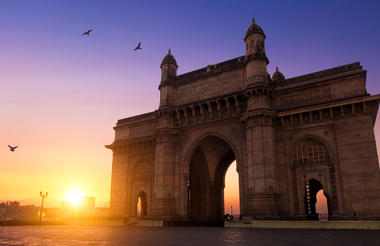
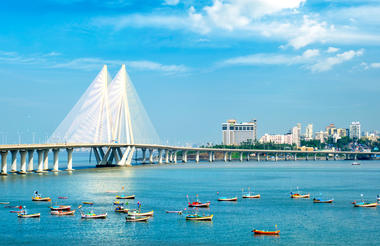
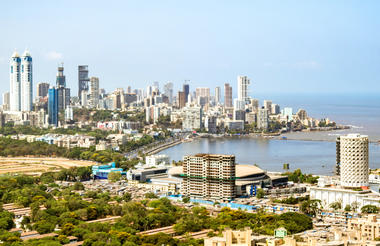
Today early in the morning proceed for the walking tour and experience Mumbai by Dawn.
Timings: 0515 hrs – 0830 hrs
Special Note: Please wear closed shoes for the tour
Mumbai has an infectious charm and energy of its own and its early morning sights gives you an interesting peek into the mercurial character of the city. As the city wakes up, one can get a whiff of the cultural insights of the real Mumbai, the underbelly of this magnificent city and understand what makes it tick. Mumbai by Dawn pays homage to the people of Mumbai such as the newspaper vendors, the fruit and vegetable sellers operating in various markets of the city, the flower vendors and the milkmen unfailingly delivering milk every morning, all striving hard with a sole and focused intent – a better life.
Return back to hotel and post breakfast proceed for excursion tour to Elephanta Caves and Island.
Elephanta caves (Remains closed Monday & during Monsoon). The island of Elephanta is an hour away from Mumbai by motor launch. The cave temples here were excavated between the 5th and 8th centuries AD are famous for their magnificently sculpted panels. The best known is the one that depicts the Maheshmurti – a three – headed image of Lord Shiva, which signifies the creator, preserver and destroyer of this universe as per Hindu mythology. The Portuguese named this island after a large stone elephant that was found near the landing. The elephant now stands at the Victoria and Albert Museum on the mainland.
Return back and proceed for the city tour of Mumbai :
Prince of Wales Museum: Housed in an impressive building designed by George Wittet to commemorate the visit of the Prince of Wales to India in 1905. The museum has a good collection of ancient Indus Valley artifacts dating back to 2000 BC and some priceless Tibetan and Nepali Art. The chief attraction here is the collection of over 2000 miniature paintings from the various art schools of India
Mani Bhawan: A memorial dedicated to the Father of the Nation, Mahatma Gandhi. He used to stay at House No.19 called Man Bhavan, from time to time between 1917 and 1934. He was arrested here in 1932 and taken off for one of his many prison terms. The building now contains a pictorial gallery, a 20,000-volume research library, a film and recording archive and a set of diorama on the Mahatma's life.
Marine Drive: Built in 1920, Marine Drive runs along the shoreline of the Arabian Sea from Nariman Point to the foot of Malabar Hill. It passes Chowpatty Beach along the way. It's one of Mumbai's most popular romantic spot and sunset view is amazing. Tourist brochures are fond of stating it as the Queen's Necklace, because of the dramatic curve of its streetlights at night.
Hanging Gardens: Perched at the top of Malabar Hill, on its western side, just opposite the Kamala Nehru Park, these terraced gardens; also known as Ferozeshah Mehta Gardens, provide lovely sunset views over the Arabian Sea. The park was laid out in the early 1880s over Bombay's main reservoir, some say to cover the water from the potentially contaminating activity of the nearby Towers of Silence.
Victoria Terminus: A historic railway station and a UNESCO World Heritage Site in Mumbai, which serves as the headquarters of the Central Railways.
Visit Gateway of India: the principal landmark of Mumbai, was the principal port when the visitors came to India by ship. The gateway was conceived, following the visit of King George V to India in 1911, and was officially opened in 1924. Its architecture is akin to the conventional Arch of Triumph, with elements derived from Muslim styles of 16th century Gujarat.
In the evening Visit to a Parsi home for Cooking demonstration with dinner:
When the Parsis landed in India, Gujarat to be specific, little did they know that their culture and food would add a unique dimension to this eclectic country. Over the years, they not only endeavoured to better the lives of the local folks with philanthropic activities, but also created
magic in their kitchen. They Introduced India to some gastronomic delights, by combining the richness of Persian delicacies with quintessential Indian spices. The hearty cuisine consists of a balanced meal, which is infused with flavours ranging from sweet to sour to spicy. The most popular of it all, is the ‘Lagan Nu Bhonu’ or the lavish Parsi wedding meal. This three course meal comprises of fish, meat, vegetable lentils, among other things, to make it a balanced and nutritious meal.
To round off this whirlwind of culinary flavors, they have a special treat called the ‘Laganu Custard’ – A tasty dessert which is India’s answer to the Crème Brule. The distinct flavour added by the Parsis, be it culturally or with their food, makes this dwindling community a treasure trove of gastronomic pleasures. Since Mumbai boasts of the maximum number of Parsi population in the world, it comes as little surprise, that this meal is part of your coastal culinary experience. You will Interact with Aunty, who will teach you a couple of dishes that are traditionally Parsi. So,
you will not only take back her Grandmothers recipes but also a ton of love.



Today transfer to the airport to connect with your flight for Nagpur.
Flight Detail:
Mumbai - Raipur IndiGo: 6E-801 0925/1115
Arrive at Raipur airport and drive towards Kanha National Park. (200 Km / 5.30 hrs. approx).
The lush Sal and bamboo forests, grassy meadows and ravines of Kanha provided inspiration to Rudyard Kipling for his famous novel "Jungle Book". The Kanha National Park in Madhya Pradesh came into being in 1955 and forms the core of the Kanha Tiger Reserve, created in 1974 under Project Tiger. The Park's landmark achievement is the preservation of the rare hard ground Swamp Deer (Barasingha), saving it from near extinction. Stringent conservation programs for the overall protection of the Park's fauna and flora, makes Kanha one of the most well maintained National Parks in Asia.
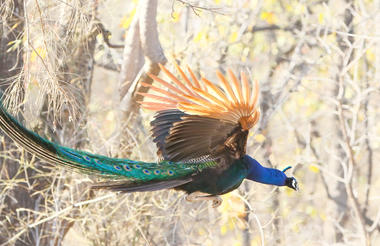
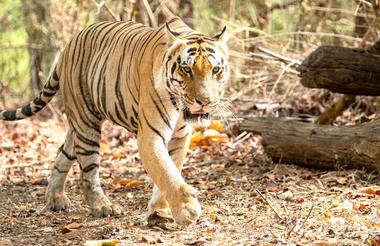
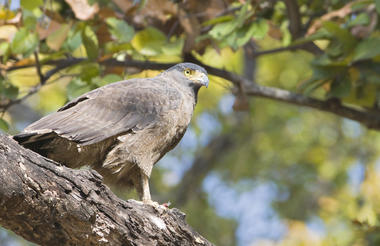
Morning and Afternoon Game Drive at Kanha National Park, in an open-top jeep in the company of a naturalist.
Kanha boasts of about 22 species of mammals. Some of the inhabitants of this park are the Gaur, the largest of the world's cattle; the sambar, the largest Indian deer; and the Chausingha, the only four-horned antelope in the world. Other frequent visitors include the Nilgai antelope, the sloth bear, the dhole, or Indian wild dog, and an occasional panther. Some 200 species of birds inhabit the park, that includes the cattle egret, black ibis, hawk eagle, crested serpent eagle and various water fowl. Shravantal is an old tank in the central Kanha meadows, which happens to be an important watering hole, for a large number of waterfowl in winter. Bamni Dadar, or Sunset Point, is the most beautiful section of the park, and the view of the sunset from this spot is absolutely mesmerizing. The place is a regular haunt of the Sambar, Gaur, the four-horned antelope and the barking deer.
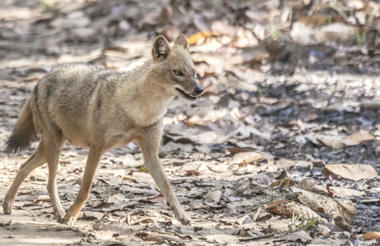
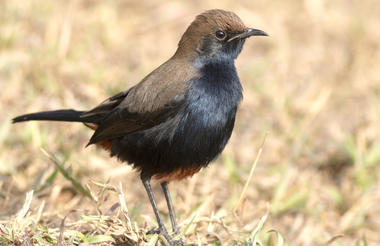
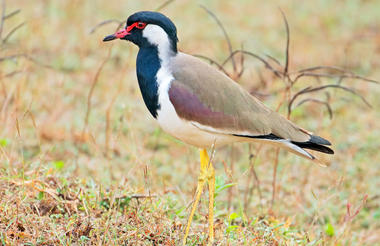
Post breakfast drive towards Bandhavgarh (270 Km / 6 Hrs Drive)
Bandhavgarh is a long one but gives you an idea of the remoteness and tranquility of Central India. Bandhavgarh is a small National Park; compact, yet full of game. The density of the tiger population at Bandhavgarh is the highest known in India. Covering 448 sq. km, Bandhavgarh is situated in outlying hills of the Vindhya range.
On arrival check in to the hotel. Rest of the day is at leisure to avail the resort facilities.
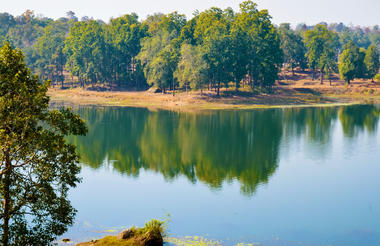
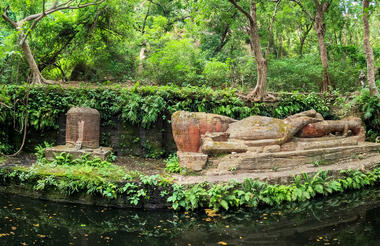
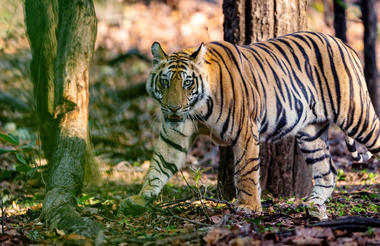
Today Morning & Afternoon game drive at National Park, in an open-top jeep in the company of a naturalist.
Bandhavgarh is densely populated with other species: the great Gaur, or Indian bison, can be seen with ease, as they come onto the meadows to graze at dusk; Sambar and barking deer are a common sight and nigai are to be seen in the more open areas of the park. The finest of these hills is Bandhavgarh, sided with great cliffs and eroded rocks and on its highest point stands Bandhavgarh fort, thought to be some 2,000 years old. Scattered throughout the park, and particularly around the fort, are numerous caves containing shrines and ancient Sanskrit inscriptions.
The vegetation is chiefly of Sal forest in the valleys and on the lower slopes, gradually changing to mixed deciduous forest on the hills and in the hotter, drier areas of the park in the sough and west. Bamboo is found throughout.
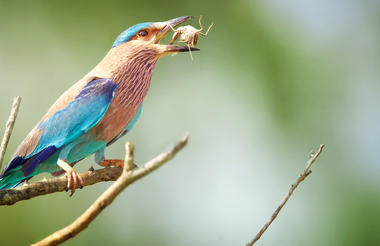
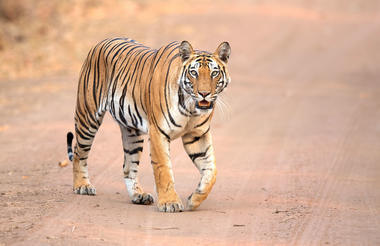
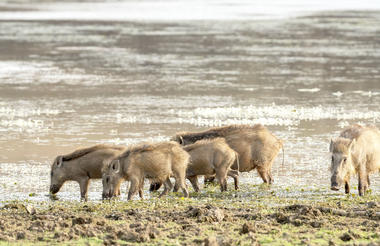
Today Morning & Afternoon game drive at National Park, in an open-top jeep in the company of a naturalist.
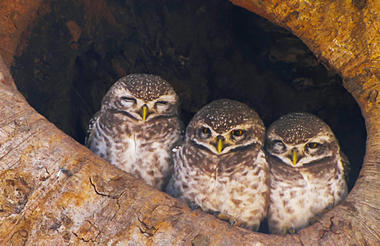
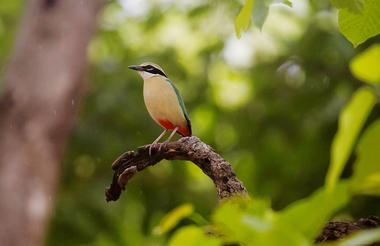
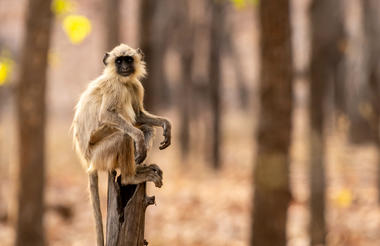
Post breakfast drive towards Panna (188 Km / 4 Hrs 34 Mins)
Also known as the Panna Tiger Reserve, the Panna National Park, in the central Indian state of Madhya Pradesh, is an impressive 550-square-kilometer expanse of wilderness characterised by high plateaus, plunging gorges, vast teak forests, and rolling savannah grasslands. From peaceful boat rides watching crocodiles along the banks of the Ken River, to catching glimpses of tigers, leopards and sloth bears on an exhilarating jeep safari, Panna offers wildlife enthusiasts many exciting opportunities. Aside from the park’s famous big cats, visitors can look forward to spotting an array of exotic wildlife species including antelope, deer, monkey, wild dog, hyena, jackal, sloth bear, otter and over 300 species of bird.
Upon arrival check-in at hotel
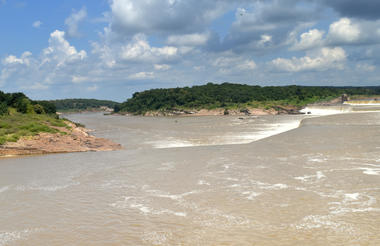
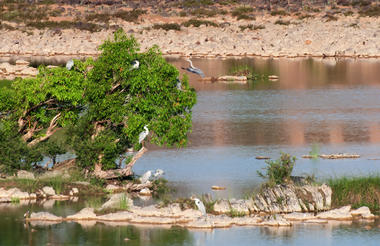
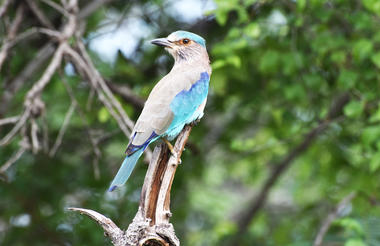
Early in the morning proceed for the Game drive in Panna national park in an open-top jeep in the company of a naturalist.
One of the most pristine, quiet and beautiful of India’s wilderness areas, Panna National Park is the ideal place to escape to for serene appreciation of the country’s sheer natural beauty. The diverse landscape of gorges, plateaus, forests and the majestic Ken River creates surprises around every corner. Although the tiger population of the park is sparse, Panna is home to no less than five other species of cat – leopard, jungle cat, leopard cat, rusty spotted cat and caracal. Hyenas, wild dogs, jackals, wolves and foxes are also found here, together with India’s ‘Big Four’ snakes, the spectacled cobra, Russel’s viper, saw scaled viper and common krait.
Return to hotel for breakfast.
Day is at leisure to rest and relax in the tranquility of surroundings.
Post lunch we will again embark on the jeeps for the afternoon game drive in the company of a naturalist.
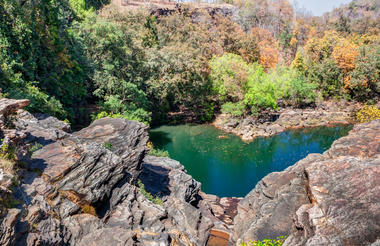
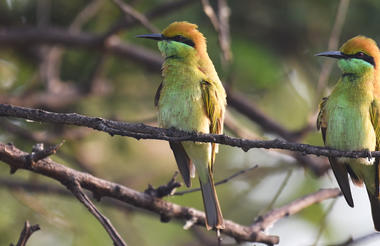
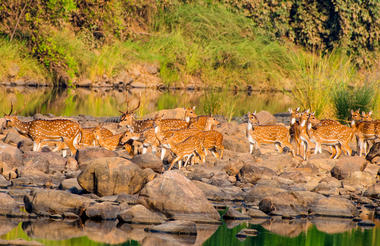
Today in the morning enjoy the sightseeing tour of Khajuraho temples, built between 950 & 1050 AD by the mighty warrior kings of the Chandela dynasty, in a truly inspired burst of creativity. Temples are famous for the magnificent carvings depicting numerous sexual postures of the famous 'Kamasutra' ancient Indian work on sex. Only 22 temples survive of the 85 originally built. In fact, worship is still done today in the Matangeshwara temple, continuing an unbroken 1000 year tradition.
Later in time transfer to Khajuraho airport to connect with your flight for Varanasi.
Flight Detail :
UK-622 Khajuraho / Varanasi 1420 / 1525
Arrive at Varanasi airport and transfer to the hotel and check-in.
Rest of the day is at leisure.
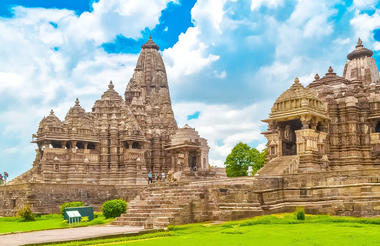
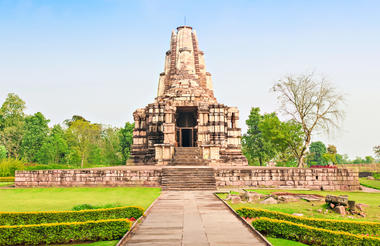
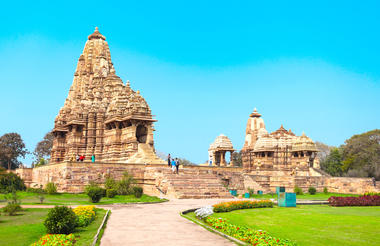
Early morning, enjoy a boat ride on the river Ganges (subject to water levels). Varanasi's principle attraction is the string of bathing ghats, which line the western ghats of River Ganges. The spectacular series is a unique sight, best viewed at dawn. The early morning boat ride presents an incredible scene as the multitudes of devotees come to the river to pay homage to the Sun God or locals come to perform their daily rituals.
Proceed to visit the Kashi Vishwanath Temple, dedicated to Jyotirlinga of Shiva, Vishwanathan and Vishweshwara, the majestic Kashi Vishwanath Temple is situated in the centre of the city of Varanasi. Some domes of the temple are covered in gold donated by Punjab Kesari Maharaja Ranjeet Singh. The temple has been visited by all the great Hindu saints and several other spiritual personalities. The Kashi Vishwanath Temple attracts visitors not only from India but from abroad as well. (Kindly carry your passports as it will be required to enter the temple).
Followed by visit of Akhada. The ancient tradition of Indian wrestling, known as kushti, thrives in Varanasi, one of the world’s oldest cities. Wrestling gyms, or akhara, scattered around the city are of the few places where Hindu men from different casts are considered equals. Aside from bodybuilding, practitioners emphasize a life of discipline and celibacy. Akharas are akin to gyms – where local men go to train using a range of fairly simple but effective equipment. They are also used as sites where pehlwani or wrestlers train and practice their wrestling on the kushti (wrestling ground with hallowed earth). Most akharas are associated with a guru – a holy man who trains the wrestlers with the assistance of older wrestlers. It’s not just a sport and an art, it’s an ancient subculture. Wrestlers live and train together and have strict rules. They may not drink, smoke or have sex.
Return back to the hotel for breakfast.
Visit the Bharat Mata Temple -The temple houses a marble idol of Bharat Mata along with a marble relief map of India. Guided walk tour of Varanasi This experience will take you in to the studios and workshops of Varanasi’s leading textile designers and craftsmen. Also discover the finger licking delicacies that Varanasi is renowned for. In this experience, will visit traditional food stalls that developed in the folds of the culture of Varanasi. At each stop you will unravel the history, traditions, and culture behind the "house specialties".
Later we take an excursion tour to Sarnath where Lord Buddha had preached his first sermon and which is now a spiritual place of mainly stupas, shrines and temples. Also visit the museum which houses a collection of valuable ancient scriptures & artifacts related to Buddhism. (Sarnath museum is closed on Fridays).
Later in the evening witness a Hindu prayer ceremony ‘Aarti’ on the Ganges River. You will be escorted to Dhaswashmedh Ghat from where you will embark on a boat to witness the aarti for approximately 20- 30 minutes. The river banks ‘ghats’ and temples are lit with oil-lamp and candles which create a magical effect. Devotees float the oil lamps in the water as an offering to the holy river. Return to the hotel.



Post breakfast, transfer to airport to board the fight for Delhi.
Flight Detail :
6E-629 Varanasi / Delhi 1025 / 1210
Arrive and proceed to visit the city tour of Old & New Delhi.
The majestic Jama Masjid – meaning ‘world-reflecting’ mosque – is Old Delhi’s principal place of worship, and the largest and most renowned of its kind in India. Built in the 17th century by the Mughal Emperor Shahjahan – who also built the Taj Mahal and the Red Fort – it’s an elaborate structure featuring an expansive geometric base topped with globe-shaped minarets crafted from strips of red sandstone and white marble, and a massive courtyard that can hold up to 25 000 people. Jama Masjid is particularly impressive just before dusk, when its rosy hues intensify in the glow of the setting sun.
India Gate: Drive through Lutyens Delhi and see India Gate which commemorates the 70,000 Indian soldiers who died in the 1st world war. 13516 names of British and Indian soldiers killed in the Afghan War of 1919 are engraved on the arch and foundations. Photo stop at Rashtrapati Bhawan once the Viceroy's residence is now the official residence of the President of India.
Gurudwara Bangla Sahib is a beautiful Sikh temple located in Delhi, India. Before the structure was turned into a temple, it was the residence of Raja Jai Singh. This golden-domed temple's name is dedicated to Guru Harkishan Sahib, who was the 8th Sikh Guru. Today it serves as a place of worship, a hospital, a museum, and a school.
Humayun's Tomb, the mausoleum complex of Humayun, India’s second Mughal Emperor, was commissioned by his widow in 1565 and was the first garden tomb to be built in India, taking seven years to complete. Humayun had travelled widely in Persia and Central Asia during his lifetime, and many of the architectural principles he brought back from these journeys were incorporated into the building at his wife’s instructions. With its double domes, decorative inlaid marble and vast garden with pools connected by channels, this 16th Century building set the stage for the style that culminated in the Taj Mahal almost 100 years later.



Today in time transfer to the Delhi airport to connect with the flight for your onward journey.





